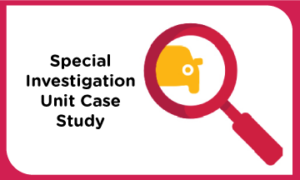According to a 2021 survey from ValuePenguin, more than 20% of consumers admit to lying to their insurance providers, which constitutes some level of fraud. Insurance fraud can be classified into two categories: hard fraud and soft fraud. Hard fraud involves deliberately causing damage to collect on an insurance policy. Soft fraud is more common and includes exaggerating the amount of damages to increase the insurance payment. Soft fraud also includes misrepresentation or intentionally omitting information to obtain a lower insurance premium.
Maryland Auto recently investigated a case involving a policyholder accused of a hit-and-run accident in Prince George’s County. The claimant alleged that a Maryland Auto policyholder’s truck changed lanes, struck their vehicle, and sped away. When the claim was presented to Maryland Auto and investigation was conducted. Although the policyholder denied involvement in the accident, the evidence presented by the claimant was significant.
After the incident occurred, the claimant followed and recorded the fleeing truck while calling the Maryland State Police. The claimant presented their video footage, which showed the policyholder fleeing the scene in the insured vehicle and, at times, traveling on the shoulder of the road. In the video, the truck had clear, distinguishing features. The footage also contains audio of the claimant reading the license plate number of the truck to the dispatch operator. The plate number in the video matches the policyholder’s vehicle. Additionally, a police report was filed with the Maryland State Police referencing the same license plate, tracing back to the insured truck.
Investigating the claim further, our SIU investigator conducted a tag trace. This search yielded images of the vehicle over the past three years that confirmed the presence of the distinct features seen in the claimant’s video.
Despite the license plate match and the distinguishing features in the video, the policyholder denied the incident when contacted by investigators. They also stated that they had owned the truck for six years and that nobody else drove it, ruling out theft or permissive use by another driver.
Due to the clear evidence presented by the claimant that contradicted the policyholder’s statement, liability was accepted for the damages to the claimant’s vehicle. The case was also referred to the Insurance Fraud Division of the Maryland Insurance Administration for misrepresentation by the policyholder.




